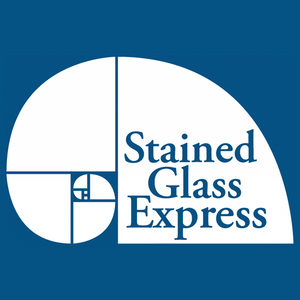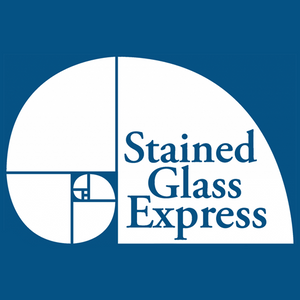
GETTING STARTED - FUSING
Info taken from Spectrum Glass
System 96 Getting Started with Kiln-fired Glass
 2. COMPATIBILITY
This is very important. Only glass that is compatible can be fused together. Glass expands when it is heated and contracts when it cools. Glass from different manufacturers have their own rate. This is called Coefficient of Expansion (C.O.E.). Most common are 96 and 90.
Youghiogheny, Wissmach and Oceanside all produce 96. Bullseye is commonly thought of as 90 but they call themselves Bullseye compatible.
3. TOOLS AND SUPPLIES
If you are already doing glass work you may have many of glass cutting tools like a cutter and pliers (breaking, running, grozing). You will also need glue (lots of types available), kiln paper, molds, primer, shelves. brushes. https://www.stainedglassexpress.com/fusing_supplies/
PLANNING YOUR DESIGN
You can use a pattern. There are lots and lots available. You can design your own. There are lots of on-line ideas on Pinterest, Instagram and Facebook.
Another technique is called Frame Focus, Fill. Create your frame or your base, create a focal point (a central element that draws the eye. The Fibonacci sequence (which our logo is) is a great one to follow.
2. COMPATIBILITY
This is very important. Only glass that is compatible can be fused together. Glass expands when it is heated and contracts when it cools. Glass from different manufacturers have their own rate. This is called Coefficient of Expansion (C.O.E.). Most common are 96 and 90.
Youghiogheny, Wissmach and Oceanside all produce 96. Bullseye is commonly thought of as 90 but they call themselves Bullseye compatible.
3. TOOLS AND SUPPLIES
If you are already doing glass work you may have many of glass cutting tools like a cutter and pliers (breaking, running, grozing). You will also need glue (lots of types available), kiln paper, molds, primer, shelves. brushes. https://www.stainedglassexpress.com/fusing_supplies/
PLANNING YOUR DESIGN
You can use a pattern. There are lots and lots available. You can design your own. There are lots of on-line ideas on Pinterest, Instagram and Facebook.
Another technique is called Frame Focus, Fill. Create your frame or your base, create a focal point (a central element that draws the eye. The Fibonacci sequence (which our logo is) is a great one to follow.
 4. MAKING THE PROJECT
There are lots of fun things to add to yur projects called accessory glass. Rods, pebbles, frit, stringers, noodles, ribbons, precuts, dots and millefiori.
4. MAKING THE PROJECT
There are lots of fun things to add to yur projects called accessory glass. Rods, pebbles, frit, stringers, noodles, ribbons, precuts, dots and millefiori.
 ASSEMBLE YOUR PROJECT
Gluing does help to hold things together until they are in the kiln. Use it sparingly. to keep from using too much apply with toothpick. "Over the counter glues" like Elmers can char if you use too much and "Super Glue" (Not Super New Glue) does not always burn off clear. Klyr-Fire gives you time to work and burns off. GlasTac blue has viscosity and keeps things from slipping when not dry. GlasTac blue can be applied after something is in place. Squeeze a drop next to the element and it will wick under. Super New Glue is great and easy to use. Lots of good options. https://www.stainedglassexpress.com/fusing_supplies/
ASSEMBLE YOUR PROJECT
Gluing does help to hold things together until they are in the kiln. Use it sparingly. to keep from using too much apply with toothpick. "Over the counter glues" like Elmers can char if you use too much and "Super Glue" (Not Super New Glue) does not always burn off clear. Klyr-Fire gives you time to work and burns off. GlasTac blue has viscosity and keeps things from slipping when not dry. GlasTac blue can be applied after something is in place. Squeeze a drop next to the element and it will wick under. Super New Glue is great and easy to use. Lots of good options. https://www.stainedglassexpress.com/fusing_supplies/
 5. FIRING
Load the Kiln
Keep projects 2" from elements
The Center is the most evenly heated. Deep or difficult should go there.
Most molds have to be elevated on kiln furniture
6. PROGRAM THE KILN
With a glass kiln you ramp and hold. Kilns come with a controller where you can program in what you wish.
It is a three part. You enter:
5. FIRING
Load the Kiln
Keep projects 2" from elements
The Center is the most evenly heated. Deep or difficult should go there.
Most molds have to be elevated on kiln furniture
6. PROGRAM THE KILN
With a glass kiln you ramp and hold. Kilns come with a controller where you can program in what you wish.
It is a three part. You enter:
 BASIC PROGRAMS
BASIC PROGRAMS
- WHAT IS FUSING
 2. COMPATIBILITY
This is very important. Only glass that is compatible can be fused together. Glass expands when it is heated and contracts when it cools. Glass from different manufacturers have their own rate. This is called Coefficient of Expansion (C.O.E.). Most common are 96 and 90.
Youghiogheny, Wissmach and Oceanside all produce 96. Bullseye is commonly thought of as 90 but they call themselves Bullseye compatible.
3. TOOLS AND SUPPLIES
If you are already doing glass work you may have many of glass cutting tools like a cutter and pliers (breaking, running, grozing). You will also need glue (lots of types available), kiln paper, molds, primer, shelves. brushes. https://www.stainedglassexpress.com/fusing_supplies/
PLANNING YOUR DESIGN
You can use a pattern. There are lots and lots available. You can design your own. There are lots of on-line ideas on Pinterest, Instagram and Facebook.
Another technique is called Frame Focus, Fill. Create your frame or your base, create a focal point (a central element that draws the eye. The Fibonacci sequence (which our logo is) is a great one to follow.
2. COMPATIBILITY
This is very important. Only glass that is compatible can be fused together. Glass expands when it is heated and contracts when it cools. Glass from different manufacturers have their own rate. This is called Coefficient of Expansion (C.O.E.). Most common are 96 and 90.
Youghiogheny, Wissmach and Oceanside all produce 96. Bullseye is commonly thought of as 90 but they call themselves Bullseye compatible.
3. TOOLS AND SUPPLIES
If you are already doing glass work you may have many of glass cutting tools like a cutter and pliers (breaking, running, grozing). You will also need glue (lots of types available), kiln paper, molds, primer, shelves. brushes. https://www.stainedglassexpress.com/fusing_supplies/
PLANNING YOUR DESIGN
You can use a pattern. There are lots and lots available. You can design your own. There are lots of on-line ideas on Pinterest, Instagram and Facebook.
Another technique is called Frame Focus, Fill. Create your frame or your base, create a focal point (a central element that draws the eye. The Fibonacci sequence (which our logo is) is a great one to follow.
 4. MAKING THE PROJECT
There are lots of fun things to add to yur projects called accessory glass. Rods, pebbles, frit, stringers, noodles, ribbons, precuts, dots and millefiori.
4. MAKING THE PROJECT
There are lots of fun things to add to yur projects called accessory glass. Rods, pebbles, frit, stringers, noodles, ribbons, precuts, dots and millefiori.
 ASSEMBLE YOUR PROJECT
Gluing does help to hold things together until they are in the kiln. Use it sparingly. to keep from using too much apply with toothpick. "Over the counter glues" like Elmers can char if you use too much and "Super Glue" (Not Super New Glue) does not always burn off clear. Klyr-Fire gives you time to work and burns off. GlasTac blue has viscosity and keeps things from slipping when not dry. GlasTac blue can be applied after something is in place. Squeeze a drop next to the element and it will wick under. Super New Glue is great and easy to use. Lots of good options. https://www.stainedglassexpress.com/fusing_supplies/
ASSEMBLE YOUR PROJECT
Gluing does help to hold things together until they are in the kiln. Use it sparingly. to keep from using too much apply with toothpick. "Over the counter glues" like Elmers can char if you use too much and "Super Glue" (Not Super New Glue) does not always burn off clear. Klyr-Fire gives you time to work and burns off. GlasTac blue has viscosity and keeps things from slipping when not dry. GlasTac blue can be applied after something is in place. Squeeze a drop next to the element and it will wick under. Super New Glue is great and easy to use. Lots of good options. https://www.stainedglassexpress.com/fusing_supplies/
 5. FIRING
Load the Kiln
Keep projects 2" from elements
The Center is the most evenly heated. Deep or difficult should go there.
Most molds have to be elevated on kiln furniture
6. PROGRAM THE KILN
With a glass kiln you ramp and hold. Kilns come with a controller where you can program in what you wish.
It is a three part. You enter:
5. FIRING
Load the Kiln
Keep projects 2" from elements
The Center is the most evenly heated. Deep or difficult should go there.
Most molds have to be elevated on kiln furniture
6. PROGRAM THE KILN
With a glass kiln you ramp and hold. Kilns come with a controller where you can program in what you wish.
It is a three part. You enter:
- The Ramp. The rate in degrees per hour, that kiln temp will rise or fall during the segment
- The Goal Temp. The temperature the kiln will seek during each segment.
- Hold Time. the number of minutes the kiln will stay at the Goal Temp, once it is reached.
 BASIC PROGRAMS
BASIC PROGRAMS
- Tack Fuse: glass is joined with little change beyond the softening or rounding of glass edges.
- Contour: The glass edges are soft and rounded, yet the project surfaces retain a degree of dimension.
- Full: Works best on two layer projects containing an even amount of glass on each layer. These will melt together completely and smooth surface.
- Slump: This is a second trip to the kiln and it is taking what you have created and put it in a mold to "slump" into the shape of the mold.


